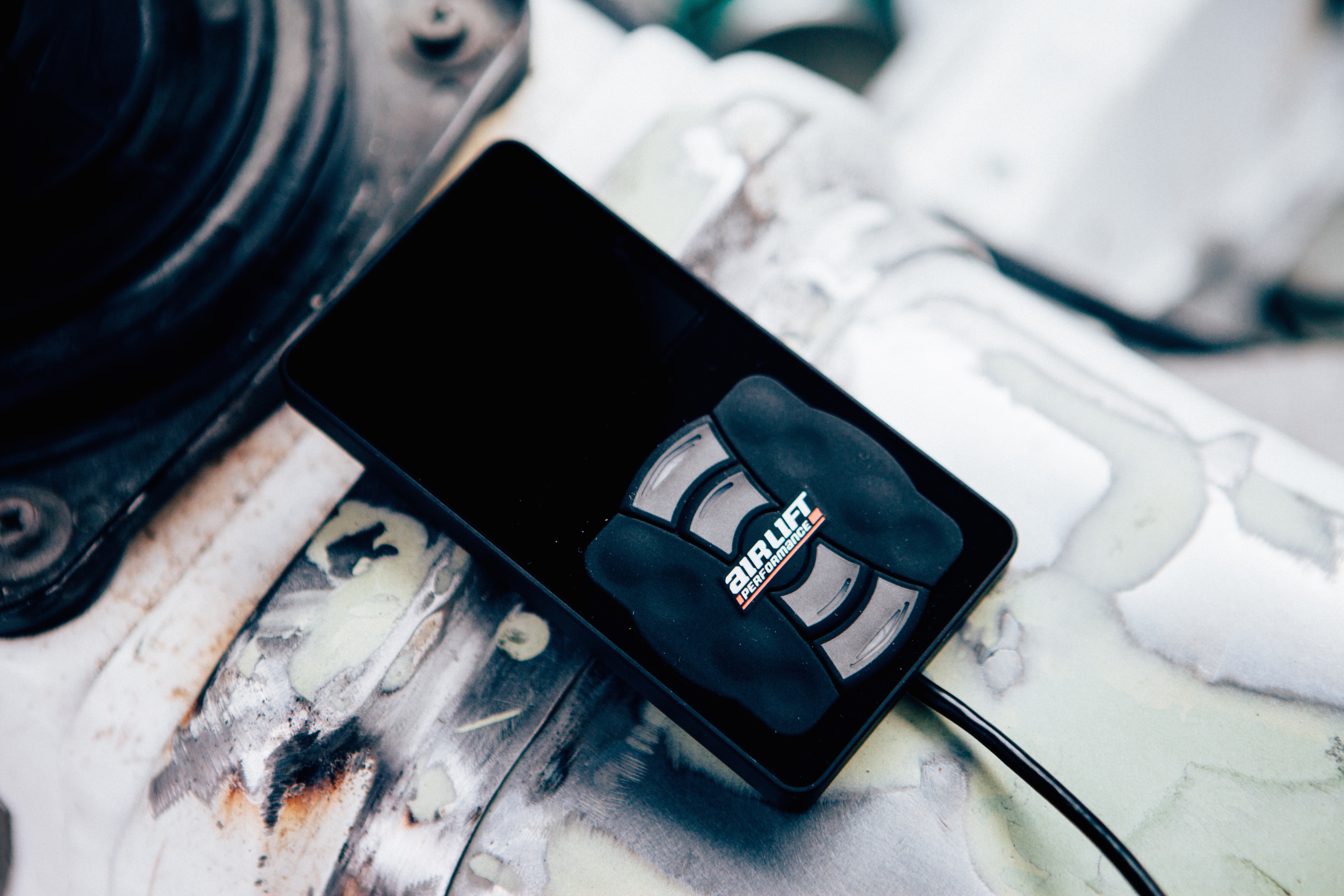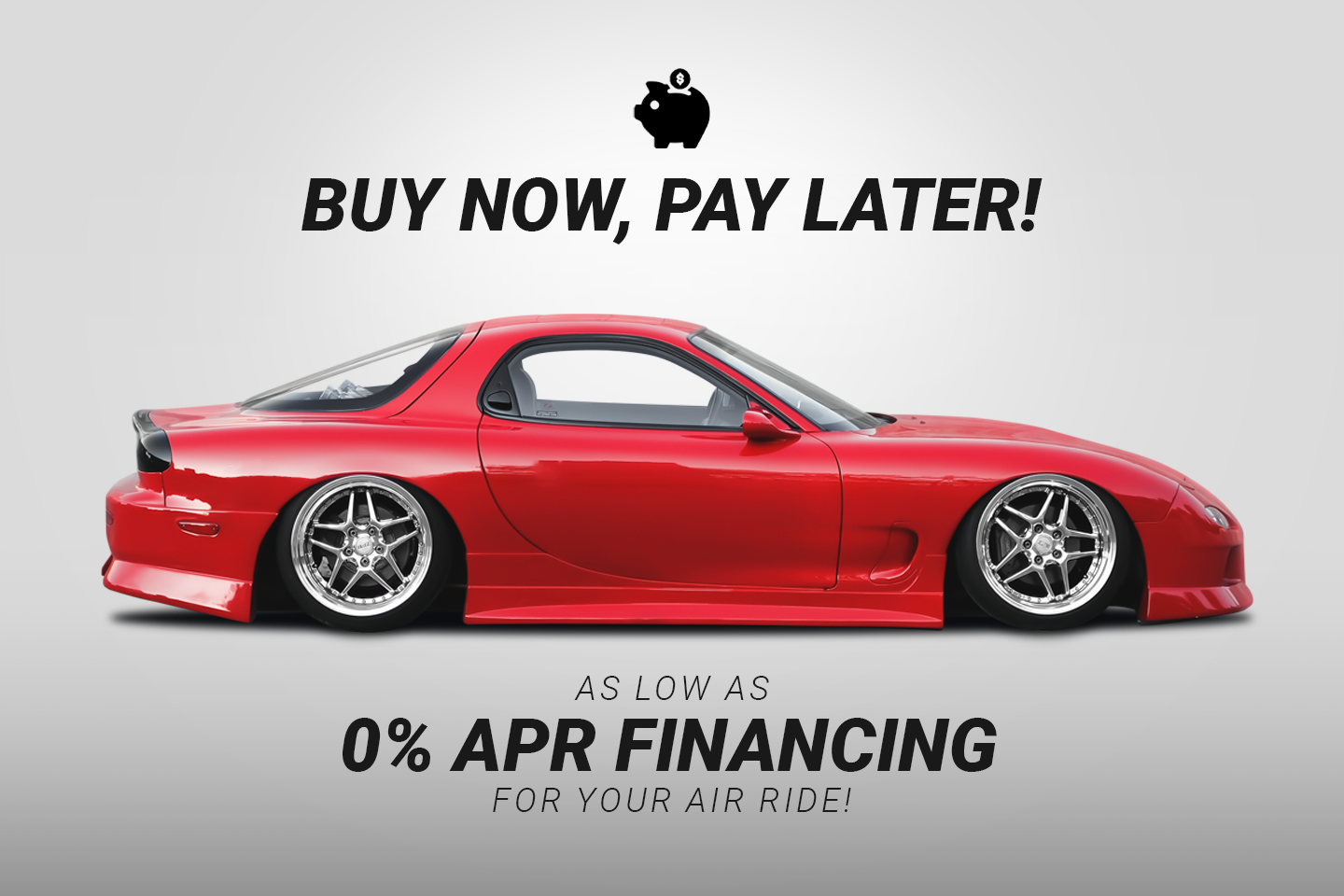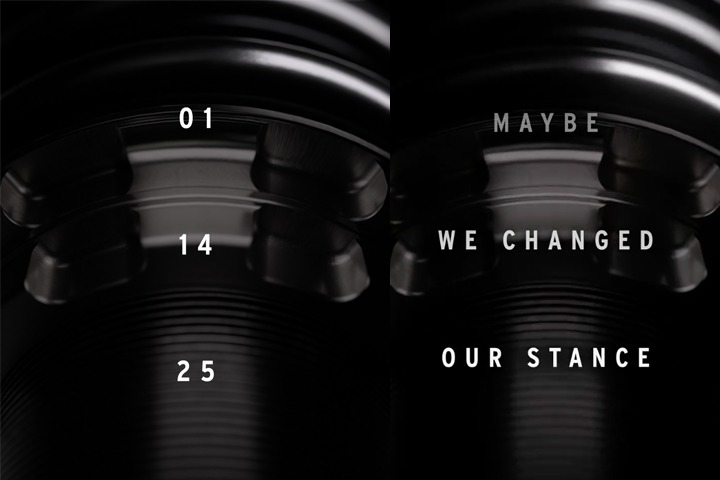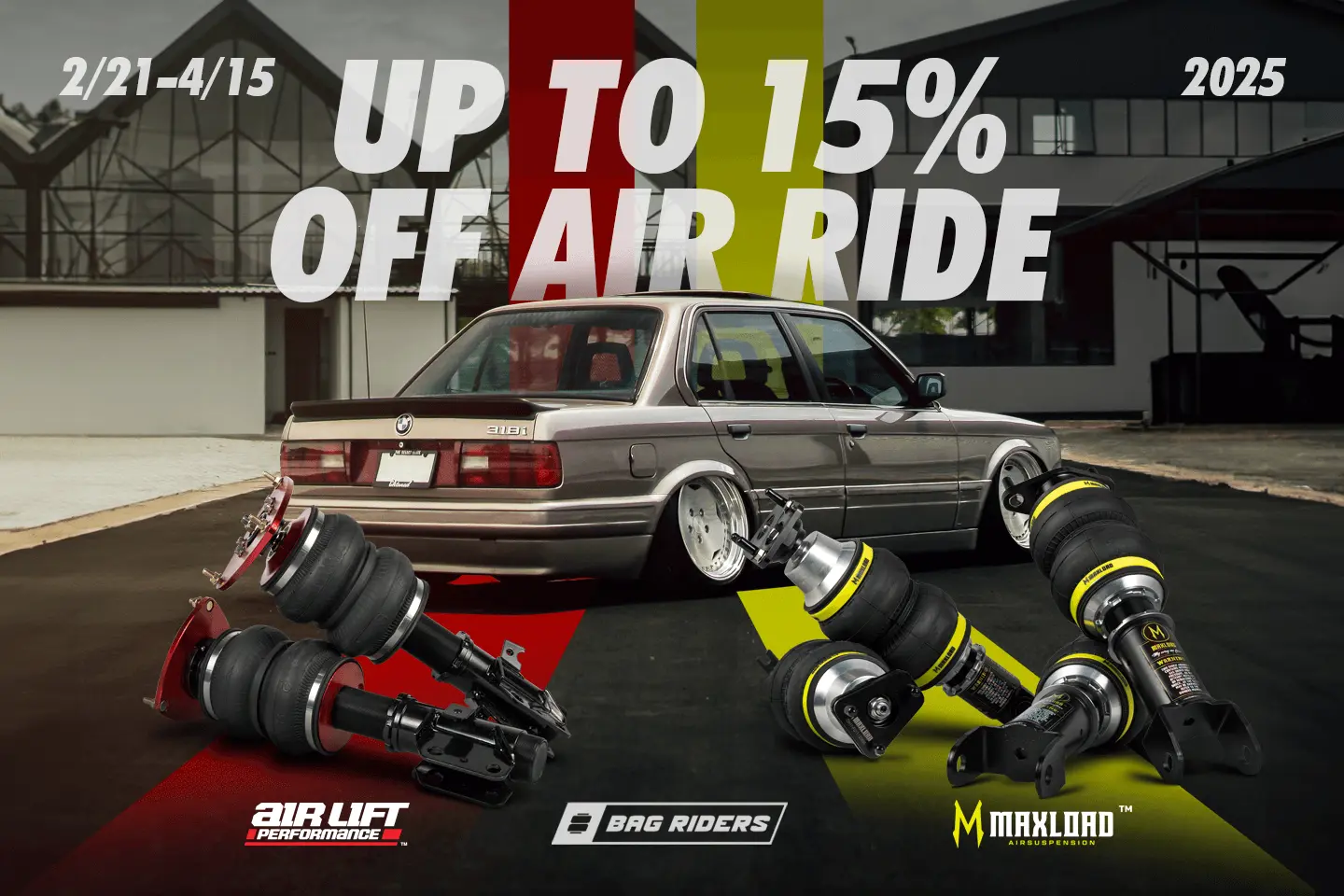Ride comfort and unparalleled versatility are two of the main reasons why many enthusiasts are choosing an air ride kit over traditional coil-spring (coilover) suspensions. It is pretty often that we receive inquiries from our customers asking how they can squeeze every last bit of performance out of their air ride; from getting their Volkswagen’s subframe on the ground to ensuring their high-powered Subaru is firmly planted in the corners of their favorite auto-x course, we’ve heard and helped through it all! This blog post will cover our recommendations and guide you through the steps of adjusting your air suspension how you best see fit and get the best bang for your buck. When you pay air suspension prices, you expect the best, and we intend to give that to you.
Before diving in, we offer this disclaimer: every Air Lift Performance air ride system setup we offer is configured according to the manufacturer’s recommendations straight out of the box.
That said, what is considered ideal by some enthusiasts may not be the same for others; the suspension is subject to personal opinion! Furthermore, this article is highly technical in nature and mandates a deep understanding of the proper precautions to take when performing suspension work. If you’re new to air suspension or to automotive work in general, this article probably isn’t for you. On the other hand, if your spanner wrench has seen its fair share of late nights and you have an insatiable thirst for technical knowledge, get comfy and read on.
Still with us? Great, let’s get started! Achieving your ideal ride quality is a multi-part formula, but we’re going to be focusing on two of the most prominent and, fortunately, easy to adjust factors: spring pressure and damping settings. Other factors outside of the scope of this article include anti-roll bars, end links, and the design of the suspension itself, among other factors.
Spring Pressure and Ride Quality
Spring pressure is something that is specific to air suspension and what sets it apart from traditional coil-sprung suspension. User-definable spring pressure is, at the most basic level, what allows an air ride-equipped vehicle’s height to be adjusted on the go. By increasing the pressure in each air spring, the springs rate is increased (becomes stiffer), and at a certain point, the vehicle gains ride height; the opposite is true when the air springs are deflated. The amount of pressure required to raise a vehicle is highly dependent on the suspension design and, of course, the vehicle itself. Therefore one can conclude that ideal spring pressures will vary greatly from one vehicle to the next.
The very first step in achieving the perfect ride quality with your air ride is to determine what you consider to be a comfortable spring pressure. For the sake of example, let us assume that you have installed your air suspension as it came from the factory; that is to say, you did not adjust the position of the lower mounts, nor did you change the length of any adjustable spring perches. While in the garage, you use your controller to adjust the vehicle’s height to what you consider to be aesthetically ideal and take it out for a test drive on a closed course.
Adjust Air Springs
While test driving the vehicle, you decide that the springs feel too soft; perhaps the car has too much body roll when cornering. You continue driving, increasing the spring pressure accordingly until you are happy with the overall firmness of the suspension. However, upon returning to your garage and exiting the vehicle, you notice that the vehicle is now an inch taller with an amount of wheel gap that looks a little different from what you had in mind. Don’t panic! You’ve just completed the first step in configuring your air ride! Please write down your four-corner air spring pressures; you’ll be needing them later.
The next step is to adjust the installed length of the suspension so that the spring pressures will be what you previously found to be ideal (and hopefully wrote down!) at your desired driving height and aesthetic “look.” In our example, spring pressure was increased to reach the desired spring rate, which raised the car resulting in an unacceptable amount of wheel gap. To remedy this, the suspension must be shortened until the desired spring pressure yields the correct ride height and stance. So, secure the vehicle on a hoist or jack stands, whip out your spanner wrench and get to work on shortening your threaded body dampers. This process should be repeated until you are happy with the feel of your springs at your desired driving height.
Adjust Damper Settings
Once air spring pressure has been dialed in, you should focus on perfecting your damping settings. Spring pressure and damping settings work together to produce a consistent and desirable ride quality for the given circumstances. Generally speaking, spring rate (determined by spring pressure in air ride) has a larger impact on the “big stuff,” such as how the vehicle absorbs bumps on the track or takes a hard corner, whereas damping plays an important role in the fine details like ensuring maximum tire contact in a slalom-style circuit or on a bumpy road course.
Damping is the act of absorbing energy, and this is exactly why we have dampers (often referred to as shock absorbers) to accompany each spring in a four-corner suspension. As a spring compresses, it absorbs the energy of the impact (e.g., a large bump) and gains potential energy, which is then released during the extension stroke of the spring. The damper performs the act of absorbing (or damping) the energy released by the spring during both the compression and rebound strokes. Some race-oriented shock absorbers provide a means to adjust compression and rebound damping individually; however, the most popular options for enthusiasts share compression and rebound adjustment as a single valve which is what we will focus on in this article.
Shock Absorbers and Damping
Inside a shock absorber, a small orifice restricts the flow of hydraulic fluid during the compression and rebound strokes, creating hydraulic friction, which provides the damping effect we desire. In the case of a shock absorber with adjustable damping, this orifice is valved, and a damping adjustment knob allows the user to adjust the size of the orifice to their liking. By adjusting the damping setting in favor of more stiffness, the size of the orifice is decreased, further restricting the flow of hydraulic fluid and increasing hydraulic friction and the damping effect. The opposite is true when the damping knob is adjusted towards a softer setting.
In order to understand the practical effects of damping, let us first consider a vehicle without any shock absorbers at all. Whenever the vehicle hits a bump in the road, the springs will happily absorb the energy of the impact during their compression stroke and proceed to release the energy during the extension stroke. Without a damper in place to absorb some of this energy, the vehicle will be bouncing up and down long after passing the bump in the road. You can easily recognize vehicles with “blown” or otherwise defective shock absorbers by this behavior. This is an example of a severely underdamped suspension. Juxtaposed to an underdamped suspension is a suspension with too much damping restricting the travel of the shock absorber. An overdamped vehicle is especially dangerous on a bumpy or slalom-style circuit due to the suspension's inability to return to the neutral position after a compression stroke, resulting in reduced tire-to-asphalt contact and therefore reduced traction. Far too often, we see enthusiasts crank their damping knobs to maximum stiffness (because racecar) without understanding the impact this will have on handling, not to mention the increased wear on the damper itself due to the stress and heat introduced by greater hydraulic friction.
Settings for Different Driving Styles
The amount of damping that will yield the best performance is very specific to the demands of the driver. On a slalom-style course, less damping will yield better tire contact and traction, which should result in more responsive handling and, hopefully, faster circuit times. For high-speed driving, more damping is generally preferred to increase stability, although this will result in greater levels of vibration and harshness in the cabin. Choosing a suspension that puts forth an effort to ensure damping adjustment knobs are easily accessible (such as Air Lift Performance) is important for vehicles that see a wide range of road conditions and driving styles, as damping settings should be adjusted accordingly for each.
Get Your Air Ride Kit Here
Learn More About Air Ride Basics In This Video
If you have any questions, comments, or concerns, let us know by clicking the chat bubble in the lower left of your screen and live chat with us. Or you can email us at sales@bagriders.com.

















